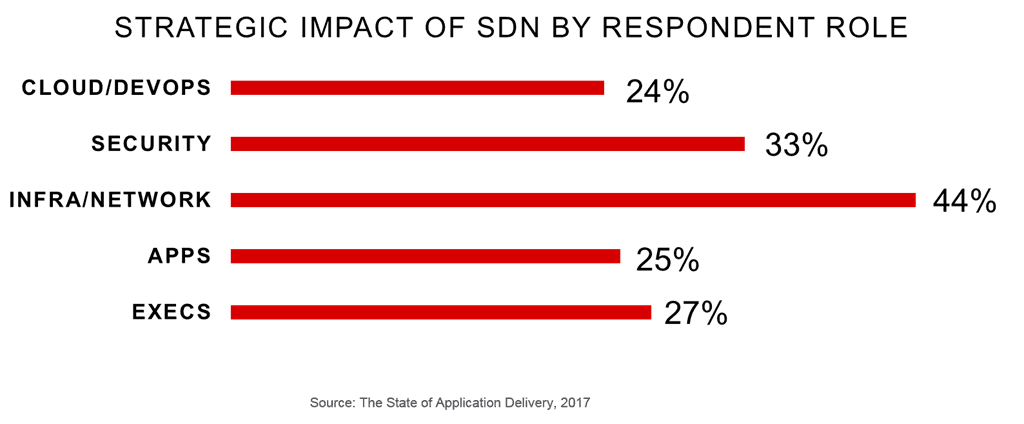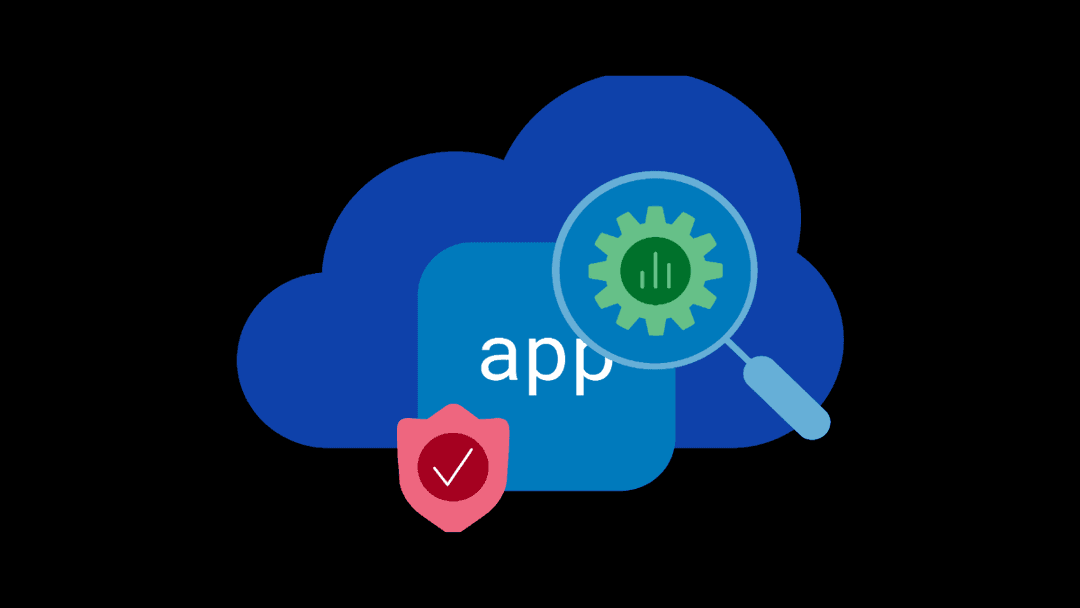SDN, which started out with a roar, was last seen whimpering by the side of the technology highway watching containers and DevOps speed by on their way to an invite-only party in the enterprise without so much as glancing back at the recent darling du jour of the technology world.
At least that’s the way it appeared a mere year ago.
The situation today appears to be somewhat more promising. While SDN may waning in terms of strategic importance (garnering only 34% who think so in our latest State of Application Delivery survey) it did gain traction in production deployments, which grew from 3% in 2016 to 8% in 2017.
But if you ask those folks in infrastructure and network roles if SDN will have a strategic impact on their organization in the next few years, nearly half (44%) will answer a resounding yes. Amongst just those folks, SDN is number one, with private cloud and public cloud right behind at 41% and 40%, respectively.

Respondents in security roles, too, seem fond of the would-be has-been technology. It managed to tie with public cloud and SaaS at 33% of security pros tagging it as strategically important, right behind private cloud (37%), big data (35%), and mobile applications (34%). That’s one in three, which is a fairly respectable number of security folks who see SDN as still having strategic legs.
The reason for this resurgence is likely found in the emphasis on private cloud implementations. With enterprises placing a high degree of importance on it and planning on investing heavily in such efforts in 2017, SDN is a natural “go to” for turning traditional networks into an agile, programmable set of connections suitable for supporting the more volatile environment that is any type of cloud, including private. To wit, SDN only narrowly missed taking the number four spot on the top investments planned for 2017 by cloud-first organizations, beat out by Big Data by half a percentage point.
SDN has evolved since it’s introduction, as do most technologies once they’ve been poked, prodded, and tossed around the industry for a year or two. SDN, like DevOps, has been largely subsumed by a broader initiative to automate and orchestrate, with an emphasis on doing and less concern for the more philosophical and cultural aspects of both technologies. Digital transformation is certainly one driver, as is the need to scale along with the increasing burden placed on IT professionals by the resulting growth in applications. You can only throw so many people at the problem of provisioning and management, after all, before the value of doing so becomes overshadowed by commensurate costs. Automation and orchestration, therefore, have become the inevitable answer to the challenge of scaling both apps and the people who manage them in production. SDN and DevOps contain both components and capabilities as part of their “package”, making either (or both) appropriate for adoption in “the network” as a response to increasing demand to scale on both people and technologies.
Something has to provide the abstraction and APIs for “the network” to become as agile as the environment and business it’s supporting, and SDN is one of the possible ways to achieve just that. Without the abstraction and the APIs, cloud does not exist. A cloud environment necessarily requires a flexible, programmable infrastructure in order to layer the compute and storage flexibility desired atop it.
SDN is not done yet. As organizations continue to execute on their private cloud initiatives – whether true “cloud” or just “cloud-like” – there will be a need to automate and orchestrate “the network” that makes SDN an appealing technological option.
About the Author

Related Blog Posts

SaaS-first strategies reshape cloud-native application delivery
F5 NGINXaaS empowers cloud and platform architects to unify operations, reduce complexity, and deliver exceptional digital experiences at scale.

F5 ADSP Partner Program streamlines adoption of F5 platform
The new F5 ADSP Partner Program creates a dynamic ecosystem that drives growth and success for our partners and customers.

Accelerate Kubernetes and AI workloads with F5 BIG-IP and AWS EKS
The F5 BIG-IP Next for Kubernetes software will soon be available in AWS Marketplace to accelerate managed Kubernetes performance on AWS EKS.
F5 NGINX Gateway Fabric is a certified solution for Red Hat OpenShift
F5 collaborates with Red Hat to deliver a solution that combines the high-performance app delivery of F5 NGINX with Red Hat OpenShift’s enterprise Kubernetes capabilities.
F5 Silverline Mitigates Record-Breaking DDoS Attacks
Malicious attacks are increasing in scale and complexity, threatening to overwhelm and breach the internal resources of businesses globally. Often, these attacks combine high-volume traffic with stealthy, low-and-slow, application-targeted attack techniques, powered by either automated botnets or human-driven tools.
Phishing Attacks Soar 220% During COVID-19 Peak as Cybercriminal Opportunism Intensifies
David Warburton, author of the F5 Labs 2020 Phishing and Fraud Report, describes how fraudsters are adapting to the pandemic and maps out the trends ahead in this video, with summary comments.
